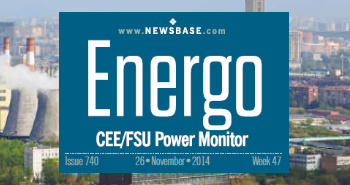Russia to clean up radioactive waste sites in six CIS countries
Rosatom will take care of the heavy nuclear legacy in Armenia, Belarus, Kazakhstan, Kyrgyzstan, Tajikistan and Uzbekistan – generous help or an attempt at political binding?

Russia will belatedly clean up the Soviet “nuclear trash.” TVEL, a subsidiary of Russia’s state-owned Rosatom, has allocated an impressive budget towards a project to contain dangerous nuclear facilities in six CIS countries. There are currently over 40 abandoned radioactive waste sites in these countries, including 14 in Kyrgyzstan and 10 in Kazakhstan.
On the borders of Kyrgyzstan, Tajikistan and Uzbekistan radioactive waste tailings are scattered. These are the remains of uranium mining, which was carried out for almost half a century and stopped in the '90s. Many of them are located in the mountains and are threatened by earthquakes.
In total, almost 420mn tonnes of radioactive waste are stored in the countries of Central Asia, while half of them are situated in Kazakhstan, namely the Semipalatinsk test site, where more than 600 nuclear explosions happened within four decades.
In Armenia, for example, the most dangerous facility is the group of temporary storage warehouses for the reprocessed fuel from the Metsamor nuclear power plant (NPP). The first power unit, which was stopped back in 1989, is used for its storage.
In the spurs of the Tien Shan on the border of Kyrgyzstan, Tajikistan and Uzbekistan, uranium ore was mined and enriched for half a century. After the USSR’s collapse, giant tailings and processing plants were abandoned, whereas the poison is spreading, intoxicating thousands hectares of land and making them uninhabitable.
Kyrgyzstan will receive more than RUB2bn ($21mn) from Russia within the framework of the Kyrgyz-Russian intergovernmental commission, for the rehabilitation of nuclear repositories, where the total volume of toxic and hazardous substances is 2.9mn cubic metres. Then the same programme will start in other post-Soviet countries. However, the issue is more political rather than financial, as a nuclear "purge" will inextricably bind its neighbours to Russia.
The programme for the liquidation of the Kyrgyz burial grounds is designed for seven years. During this time, Kyrgyzstan is unlikely to quarrel with Russia. No matter how much the West puts pressure on the countries of Central Asia, demanding that they to join the sanctions, while the West promises sanctions, Russia gives money to fight radiation.
At the same time, Russia is not only going to take out nuclear junk, but also build new facilities, including a new NPP in Armenia, which will replace the obsolete Metsamor NPP after 2036. Rosatom wants to use the Russian experience in the reclamation of nuclear facilities in the CIS countries for its own long-term and far-sighted goals.


Follow us online